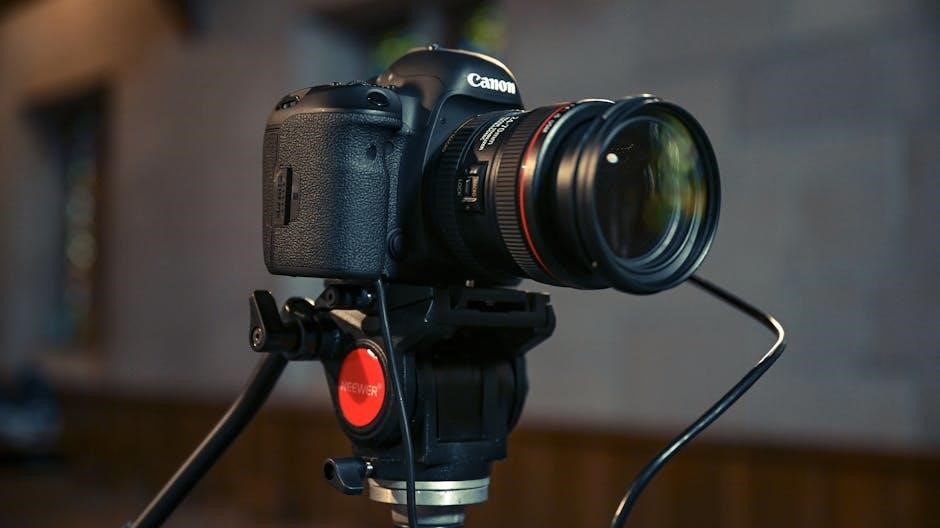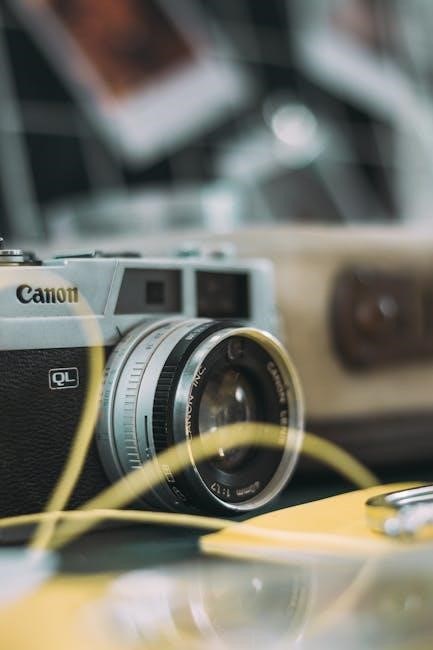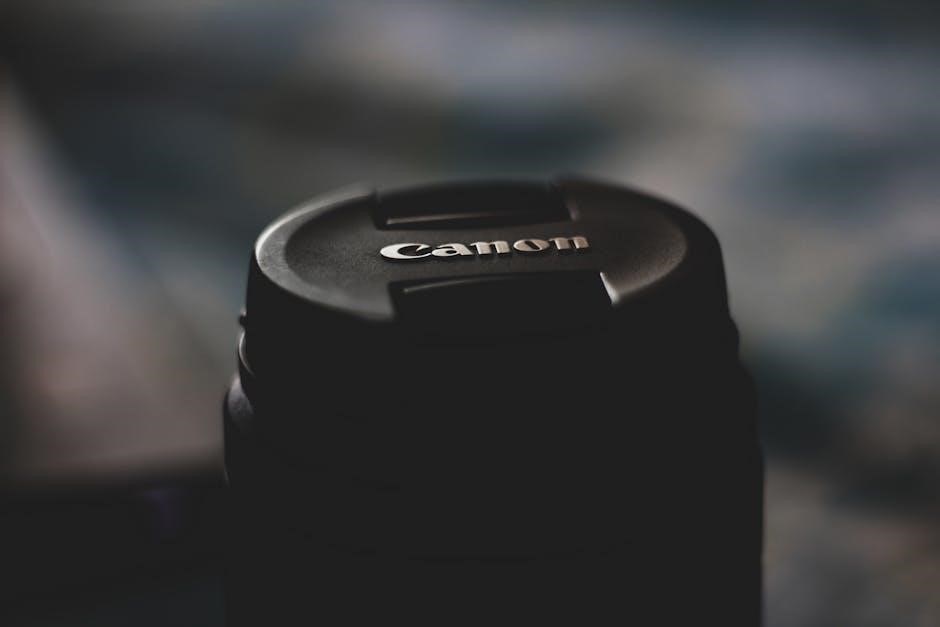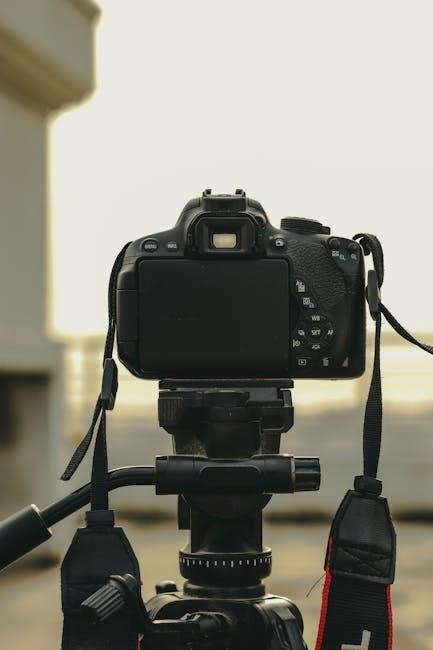The Canon FL lens manual provides guidance on various lens types, including
Overview of Canon FL Lenses
The Canon FL lenses are a series of lenses that offer a range of focal lengths and aperture settings, making them suitable for various photography applications.
These lenses are designed to provide high-quality images with minimal distortion and aberrations.
The Canon FL lens series includes a variety of lenses, from wide-angle to telephoto, each with its own unique characteristics and features.
They are compatible with Canon cameras and can be used in various modes, including manual focus and aperture priority.
The lenses are constructed with high-quality materials and are designed to withstand regular use.
Overall, the Canon FL lenses are a popular choice among photographers due to their versatility, image quality, and durability, making them a great addition to any photographer’s kit;
With their wide range of focal lengths and aperture settings, these lenses can be used to capture a variety of scenes and subjects.

History of Canon FL Lenses
Canon introduced the FL lens series in the 1960s with manual focus designs and aperture settings options available initially.
Evolution of Canon FL Lenses
The evolution of Canon FL lenses involved significant improvements in optical quality and design. Over time, Canon incorporated new technologies and materials into their lenses, resulting in better image quality and durability. The company also expanded its range of FL lenses to cater to different photography needs and applications. With the introduction of new coating technologies, Canon was able to reduce flare and ghosting in its lenses, leading to improved contrast and color accuracy. Additionally, the development of new optical designs enabled Canon to create lenses with wider apertures and greater zoom ranges. The evolution of Canon FL lenses reflects the company’s commitment to innovation and its efforts to meet the changing needs of photographers. As a result, Canon FL lenses remain popular among photographers and collectors today, offering a unique combination of optical quality, durability, and nostalgic appeal. Canon continued to innovate and improve its lenses.

Types of Canon FL Lenses
Canon offers various FL lenses, including standard, wide-angle, and telephoto options, with
Ultra-Wide and Macro Lens Designs
Canon’s ultra-wide and macro lens designs offer unique perspectives and capabilities, allowing photographers to capture stunning images with exceptional detail and clarity. The ultra-wide lenses provide an expansive field of view, making them ideal for landscape, architecture, and interior photography. Macro lenses, on the other hand, enable extreme close-up photography, revealing the intricate details of small subjects. These specialized lenses are designed to work in conjunction with the Canon FL lens manual, providing photographers with the tools and techniques needed to unlock their full potential. With their advanced optical designs and precise engineering, Canon’s ultra-wide and macro lenses are essential components of any photographer’s kit, offering new creative possibilities and pushing the boundaries of photographic expression. The combination of these lenses with the Canon FL lens manual empowers photographers to explore new avenues of creativity and artistic expression.

Using Canon FL Lenses with EF Cameras
Canon FL lenses can be used with EF cameras in stopped-down metering mode easily
Stopped-Down Metering Mode
The stopped-down metering mode is a feature that allows Canon FL lenses to be used with EF cameras, providing accurate exposure readings. This mode requires the lens to be stopped down to the desired aperture before taking a meter reading. The camera will then use this reading to determine the correct exposure settings. To use stopped-down metering mode, the lens must be set to the desired aperture and the camera must be in manual mode. The camera will then take a meter reading and display the recommended exposure settings. This mode is useful for photographers who want to use their Canon FL lenses with EF cameras, but do not have access to automatic metering. By using stopped-down metering mode, photographers can still achieve accurate exposures and take high-quality photos with their Canon FL lenses and EF cameras, with manual focus and control.

Canon EF Lenses Compatibility
Canon EF lenses are compatible with various camera models including EOS cameras and others.
Compatible Camera Models
Canon EF lenses are designed to be used with a range of camera models, including the EOS series. The EOS series includes a variety of cameras, from entry-level models to professional-grade cameras. Some of the compatible camera models include the Canon EOS Rebel T series, such as the T8i, T7i, and T6, as well as higher-end models like the 6D Mark II and 5D Mark IV. Additionally, Canon EF lenses can also be used with other EOS cameras, such as the 90D, 80D, and 77D. The compatibility of Canon EF lenses with various camera models makes them a versatile and convenient option for photographers. The Canon EF lenses can be used with both full-frame and crop sensor cameras, providing a range of creative possibilities. Overall, the compatibility of Canon EF lenses with various camera models is a major advantage for photographers. Canon EF lenses offer high-quality images and are compatible with many cameras.
Manual Focus Lenses for Canon
Manual focus lenses offer precise control and creative flexibility for Canon photographers always.
Autofocus vs Manual Focus Lenses
The debate between autofocus and manual focus lenses has been ongoing among photographers. Autofocus lenses offer convenience and speed, allowing for quick capture of moving subjects. On the other hand, manual focus lenses provide precise control and creative flexibility, making them ideal for specific genres like portrait and landscape photography. Many professional photographers prefer manual focus lenses for their ability to fine-tune focus and achieve unique effects. Additionally, manual focus lenses often have a more tactile and engaging shooting experience, which can be beneficial for photographers who value the process of taking a photo. Overall, the choice between autofocus and manual focus lenses depends on personal preference, shooting style, and the type of photography being done. By understanding the strengths and weaknesses of each type, photographers can make informed decisions and choose the best lens for their needs. Lens selection is crucial for optimal results.
Canon EF Lens Structure
Canon EF lenses have a complex structure with multiple elements and groups inside.
Elements and Groups in Canon EF Lenses
The Canon EF lens is constructed with a specific number of elements and groups, which contribute to its overall image quality and performance.
The elements are individual pieces of glass with unique refractive properties, while the groups refer to the way these elements are arranged.
A typical Canon EF lens may have between 6 to 15 elements, divided into 5 to 10 groups, depending on the lens type and design.
The arrangement of these elements and groups allows for the correction of various optical aberrations, resulting in sharper and more accurate images.
The use of advanced optical materials and coatings also helps to minimize flare and ghosting, ensuring that the lens produces high-quality images in a variety of lighting conditions.
Understanding the elements and groups in Canon EF lenses can help photographers appreciate the complexity and craftsmanship that goes into creating these high-performance lenses.
